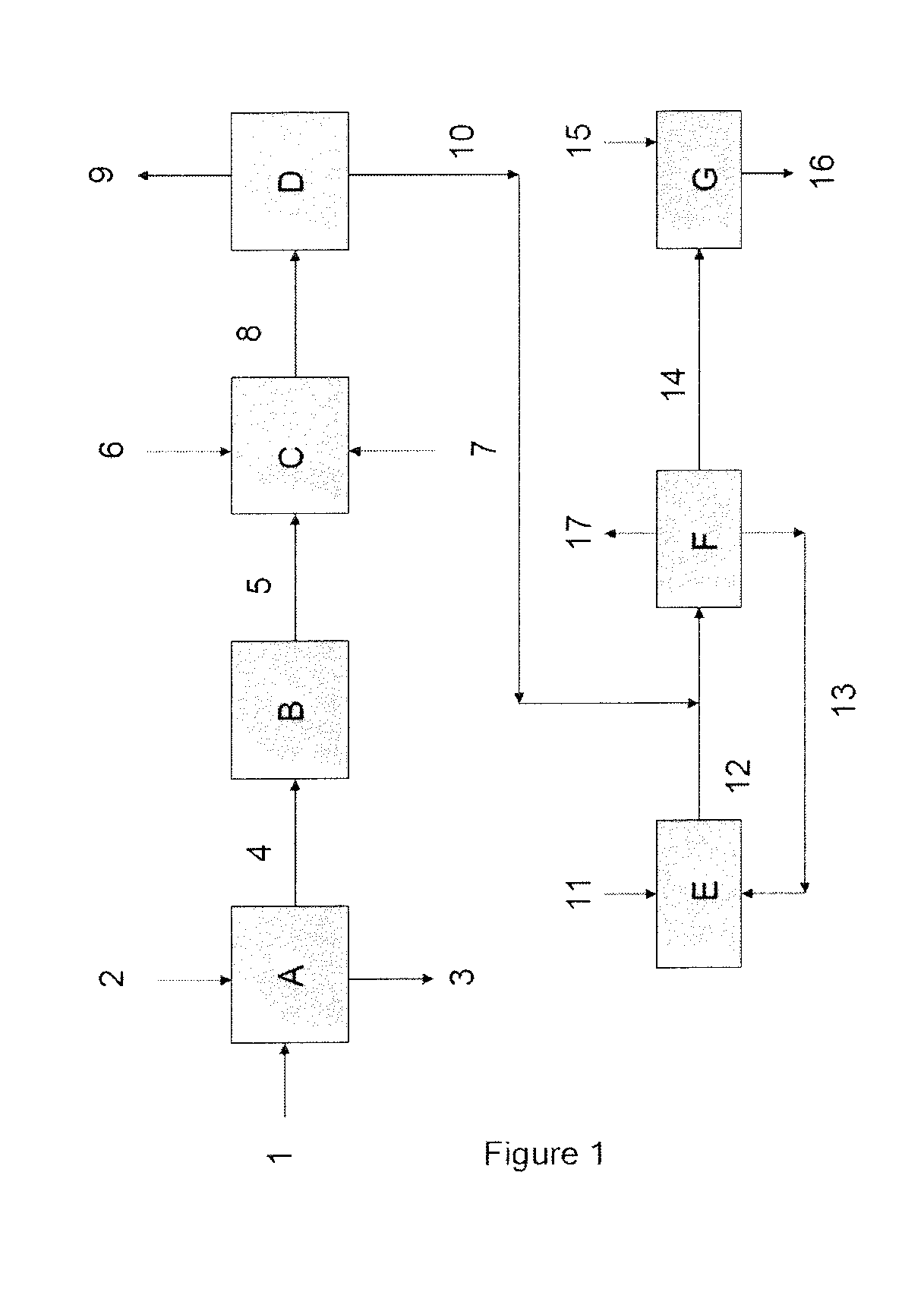Process for the production of reactive composition particles based on sodium carbonate and reactive composition particles
- Summary
- Abstract
- Description
- Claims
- Application Information
AI Technical Summary
Benefits of technology
Problems solved by technology
Method used
Image
Examples
example 1 (
Conform)
[0062]The example which is described below, with reference to the appended FIGURE, illustrates a specific embodiment of the invention.
[0063]Particles (1) of crude bicarbonate from an ammonia-soda plant, having an ammonia content of the order of 1% by weight, expressed as NH4+, and having a particle size distribution such that the diameter D50 has a value of 80 μm and the diameter D90 has a value of 150 μm, are washed with a centrifugal washer (A) using a washing liquid (2). A liquid (3), comprising ammonia, is extracted from the washer (A). At the outlet of the washer (A), the particles of crude bicarbonate from a soda plant (4) have an ammonia content of less than 1%, by weight, expressed as NH4+, and a water content of 10%. The particles (4) are subsequently introduced into a dryer (B) operating at a temperature of 90° C. The particles (5), having a water content of less than 2%, are introduced into a stream of air (7) itself entering an impact mill (C). An amount by weigh...
example 2 (
not Conform)
[0065]Known calcination of crude sodium bicarbonate (not conform to the invention) in a rotary dryer (without stream of hot gas and without recycling such hot gas) at 160-230° C. gives composition particles of sodium carbonate particles (light soda ash) of about 1.2 m2 / g.
example 3 (
Conform)
[0066]For the present example, particles of refined sodium bicarbonate (Bicar Z from Solvay Company comprising more than 99% sodium bicarbonate) and crude bicarbonate from an ammonia-soda plant (comprising 76% sodium bicarbonate, 8% sodium carbonate, 0.6% NH4HCO3, 1.7% NH4Cl, 0.4% NaCl and 14% water) have been used to compare different operating conditions.
[0067]The above sample of crude bicarbonate from an ammonia soda plant was let to dry at 25° C. in a lab ventilated oven during one night up to obtain a dried crude sodium bicarbonate comprising about 3% water.
[0068]The samples of refined sodium bicarbonate and dried crude sodium bicarbonate were divided into several samples. To part of them compounds or additives were added to the refined sodium bicarbonate, or to dried crude bicarbonate particles to obtain particles based on sodium bicarbonate. The addition was done in a Lödige mixer.
[0069]The particles based on sodium bicarbonate were then grinded in an impact mill (Hoz...
PUM
| Property | Measurement | Unit |
|---|---|---|
| Temperature | aaaaa | aaaaa |
| Temperature | aaaaa | aaaaa |
| Temperature | aaaaa | aaaaa |
Abstract
Description
Claims
Application Information
 Login to View More
Login to View More - R&D
- Intellectual Property
- Life Sciences
- Materials
- Tech Scout
- Unparalleled Data Quality
- Higher Quality Content
- 60% Fewer Hallucinations
Browse by: Latest US Patents, China's latest patents, Technical Efficacy Thesaurus, Application Domain, Technology Topic, Popular Technical Reports.
© 2025 PatSnap. All rights reserved.Legal|Privacy policy|Modern Slavery Act Transparency Statement|Sitemap|About US| Contact US: help@patsnap.com


